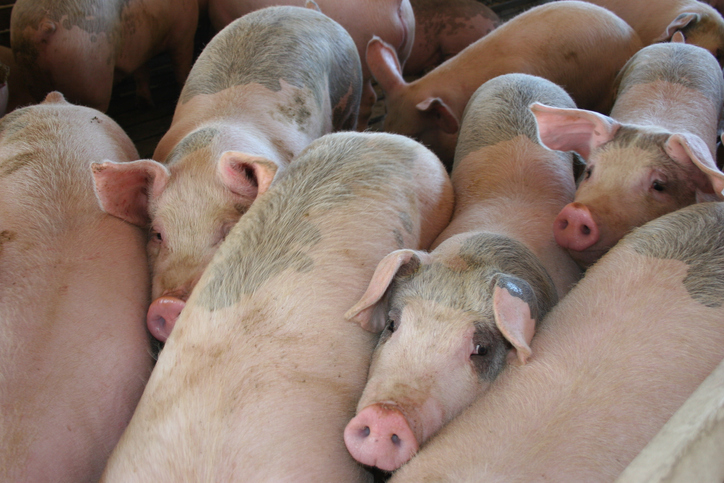Environment: humans must care for our travelling companions: earths animals, plants and ecosystems
February 25, 2023
Indigenous owned forests in the Amazon absorb carbon; non-Indigenous forests produce carbon. Chicken and pig factories are bad for the animals and bad for the climate.
Indigenous held forests capture more carbon
The importance of natural forests as carbon sinks is well recognised each year between 2001 and 2021 the worlds forests absorbed about twice as much CO2 as they produced. Also well recognised are the reduced carbon absorbing capacity of degraded forests and the threat ongoing deforestation presents to the survival of what remains as forest. The looming transition of the Amazon from a net carbon sink to a net carbon source and from forest to grassland or savannah is particularly threatening, not just locally but also for the changes this would bring to global weather systems.
Not all forests behave the same, however. The carbon absorbing and releasing qualities of forests vary greatly by geography and stewardship. Research in the Amazon has demonstrated that over the period 2001-2021 the forests managed by the 1.5 million Indigenous people were strong net carbon sinks, absorbing a net 340 million tonnes of CO2 per year, about the same as the UKs annual fossil fuel emissions. But forests outside Indigenous lands were a net carbon source due to forest loss. About 29% of the Amazonian bioregion, which covers nine countries and is 80% forest, is held by Indigenous peoples.
Also, the amount of carbon produced and absorbed by the Amazon rainforest, and the balance between these two variables, varies by country as well as by ownership, as illustrated in the two charts below covering the period 2001-2021 (the country in the middle without a name is French Guiana). Overall, Indigenous forests emitted 120 million tonnes of CO2 per year and absorbed 460 million tonnes, making them a net sink of about 340 million tonnes per year.
Forests inside Indigenous land
Conversely, forests outside Indigenous lands emitted about 1.3 billion tonnes of CO2 per year (due to forest loss) and absorbed about 1 billion tonnes: a net source of 270 million tonnes per year, about the same as the fossil fuel emissions of France.
Forests outside Indigenous land
The big difference between forest inside and outside Indigenous land is that while the amount of CO2 captured per hectare per year is about the same inside and outside (2.2 and 2.5 tonnes respectively), the emissions per hectare per year are much higher outside (3.2 compared with 0.6 tonnes).
Clearly, what happens in Brazil is the major contributor to what happens overall in the Amazons forests both within and outside Indigenous land. Brazils forest conservation policies changed quite a few times during the twenty years between 2001 and 2021, not always for the better. We must hope that the election of a new President will see a return to the active implementation of policies that decrease legal and illegal deforestation and end the theft of Indigenous land.
The World Resources Institute who commissioned the research have identified three strategies to protect Indigenous forest and the carbon they hold:
- Countries should recognise the importance of Indigenous controlled lands for the mitigation of climate change in their national climate strategies;
- Governments should recognise the low cost and high benefit of carbon mitigation when community lands are secured with, for instance, formal registration of community held land, financial and practical support for land management, and legal and police protection of community land and Indigenous people;
- Financial assistance to communities from domestic and foreign governments, and private and philanthropic organisations.
Climate change and animal cruelty
Humans consume the meat from 69 billion chickens and 1.5 billion pigs reared in factory farms each year. Further increases in these numbers will be driven by the construction of yet more factory farms in countries where meat consumption is expected to grow.
World Animal Protection (WAP our mission is to create a better world for animals) has examined the climate impact of the factory farming system for pigs and chickens (i.e. not the methane producing ruminants) in Brazil, China, the Netherlands and the USA. The greenhouse gas emissions associated with factory farming in these four global hotspots currently amount to just under 500 million tons per year. These arise from the destruction of forests to grow crops to feed the animals; the pesticides and fertilisers used on the crops; the methane released from the massive amounts of manure produced; and the consumption of fossil fuels to heat, light and ventilate the factory farms, manage the farms that grow the fodder needed for the inmates, and transport all the goods associated with all these operations. The biggest contributor to the greenhouse gas emissions is not the animals themselves but growing, processing and distributing of the feed crops.
On top of the environmental consequences, there are serious issues of animal cruelty: chickens and pigs squashed together in crowded spaces, confined in small cages and pens, mutilated for convenience or marketing, and filled with antibiotics.
WAP concludes that factory farming is not necessary to guarantee food security and that a climate-safe future is out of reach unless we tackle the continued increase in global meat consumption. Their principal recommendations are a ten year moratorium on new factory farms, no further habitat destruction to grow animal feed crops, government policies to reduce meat and increase plant-based consumption, and national standards for the welfare of farmed animals.
Meat and dairy products provide only 18% of the calories consumed by humans but their production requires 83% of the farmland. For every 100 calories of crops fed to farmed animals only about a quarter is eventually consumed by humans. Its much more efficient to grow crops that feed humans directly. A 50% reduction in pork and chicken consumption would roughly halve the associated emissions.
Clean energy investment is rising
but not where its most needed. Over the six years 2017-2022 the global investment in energy (fuels, the power sector, and end use and efficiency) increased from about US$2,100 billion per year to about US$2,400 billion, with most of the increase occurring in end use and efficiency and the power sector. Investment in actual fuels fell a little over the six years.
Over the same period, investment in clean energy increased from about US$1,100 billion per year to about US$1,400 billion. The big increases occurred in renewable energy, electric vehicles, and end use and efficiency (not, Im pleased to say, nuclear, low carbon fuels or carbon capture and storage).
The bad news is where the increased investment is happening. Whether measured in total or per person, the increases have been occurring mostly in advanced economies, a little in China and not at all where its needed most, developing countries.
Clean energy investments by world region, 2014-2022
Per capita clean energy investment by world region, 2020-2022
Al Gore vents his frustration
Al Gore delivered a Climate Change 101 in five minutes at the recent World Economic Forum. Heres a synopsis: We are not winning. The situation is still getting worse faster than we are deploying (the available technological) solutions. We have to have a sense of urgency much greater than we have had. The World Bank is failing to do its job. The people in authority are not doing their job. We are still failing badly. We cannot let the oil companies and gas companies and petrostates tell us what is permissible to discuss (at the COP meetings). The rest of us have to reform these international institutions so that the people of this world, including the young people, can say We are now in charge of our own destiny.
It’s worth having a look also at a lampooning extract of the VPs talk loaded to YouTube by the Young Americas Foundation (inspired by the ideas of individual freedom, a strong national defence, free enterprise, and traditional values) under the headline LOL: Al Gore Goes On UNHINGED Rant at World Economic Forum. No doubt it appealed to the Foundations members.








